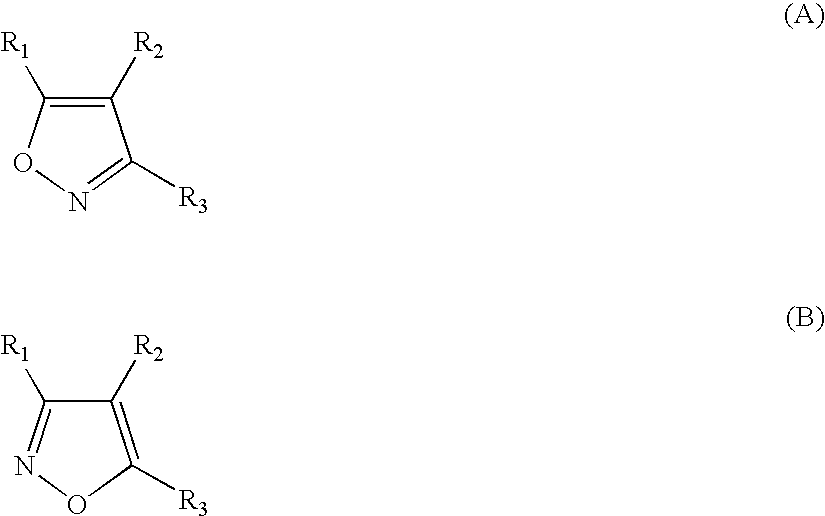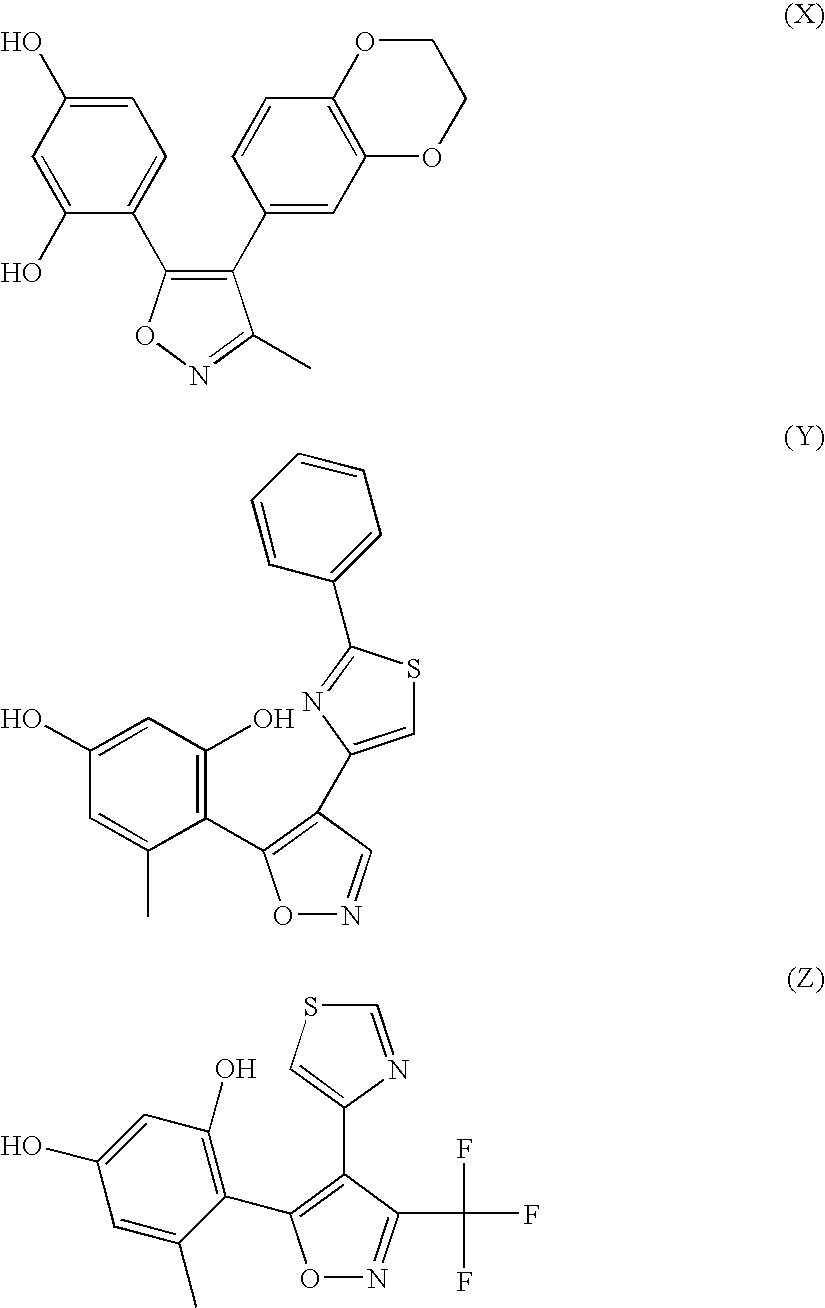Isoxazole compounds as inhibitors of heat shock proteins
a technology of isoxazole and heat shock protein, which is applied in the direction of drug composition, biocide, metabolic disorder, etc., can solve the problems of radicicol lacking antitumour activity in vivo, deregulation of molecular and physiological functions in the cell, and inhibition of hsp90 function and degradation of a number of hsp90-chaperoned signalling proteins
- Summary
- Abstract
- Description
- Claims
- Application Information
AI Technical Summary
Problems solved by technology
Method used
Image
Examples
examples 1-4
[0131]
example 1
4-[4-(4-Methoxy-phenyl)-3-methyl-isoxazol-5-yl]-benzene-1,3-diol
[0132]
Step 1
1-(2,4-Dihydroxy-phenyl)-2-(4-methoxy-phenyl)-ethanone
[0133]
[0134]Resorcinol (4.4 g, 40 mmol) and 4-methoxyphenylacetic acid (6.6 g, 40 mmol) in boron trifluoride.etherate (25 ml, 0.2 mol) was heated, under a nitrogen atmosphere, at 90° C. for ˜90 mins. to give a pale red solution. The solution was allowed to cool and poured into aqueous sodium acetate (200 ml, 10%) and the mixture stirred to give a pale yellow precipitate. The solids were removed by filtration and washed with water (200 ml). Solids were taken up in ethyl acetate (250 ml) and washed with water (200 ml). Solution was dried over anhyrous magnesium sulphate and concentrated, to a yellow semi-solid. Trituration with diethyl ether (100 ml) gave the 1-(2,4-dihydroxy-phenyl)-2-(4-methoxy-phenyl)-ethanone as a pale orange solid, dried in vacuo, (2.2 g) LC retention time 2.39 minutes [M+H]+ 259.2 (Run time 3.75 mins) N.M.R (DMSO-d6) 7.95(d J 8.9 Hz A...
example 2
4-Bromo-6-[4-(4-methoxy-phenyl)-3-methyl-isoxazol-5-yl]-benzene-1,3-diol
[0142]
[0143]Benzyltrimethylammonium tribromide (3.95 g, 10 mmol) was added portion-wise to an ice cooled suspension of 4-[4-(4-methoxy-phenyl)-3-methyl-isoxazol-5-yl]-benzene-1,3-diol (Example 1) (2.95 g, 10 mmol) in dichloromethane (50 ml) and the mixture stirred for ˜60 mins, at room temperature. Ethyl acetate (300 ml) was added and the mixture washed with water (3×200 ml) and saturated aqueous sodium chloride solution (50 ml). The solution was dried over anhydrous magnesium sulphate and concentrated to give a pale brown solid. Crude product was purified by column chromatography, on silica, eluting with ethyl acetate / hexane (1:2), to give 4-bromo-6-[4-(4-methoxy-phenyl)-3-methyl-isoxazol-5-yl]-benzene-1,3-diol as a white solid, dried in vacuo, (3.42 g)
[0144]LC retention time 2.38 minutes [M+H]+ 378.2 (Run time 3.75 mins) N.M.R (Acetone-d6) 7.35(s ArH) 7.2(d J 8.8 Hz 2ArH) 6.9(d J 8.8 Hz 2ArH) 6.65(s ArH) 3.8(s...
PUM
 Login to View More
Login to View More Abstract
Description
Claims
Application Information
 Login to View More
Login to View More - R&D
- Intellectual Property
- Life Sciences
- Materials
- Tech Scout
- Unparalleled Data Quality
- Higher Quality Content
- 60% Fewer Hallucinations
Browse by: Latest US Patents, China's latest patents, Technical Efficacy Thesaurus, Application Domain, Technology Topic, Popular Technical Reports.
© 2025 PatSnap. All rights reserved.Legal|Privacy policy|Modern Slavery Act Transparency Statement|Sitemap|About US| Contact US: help@patsnap.com



